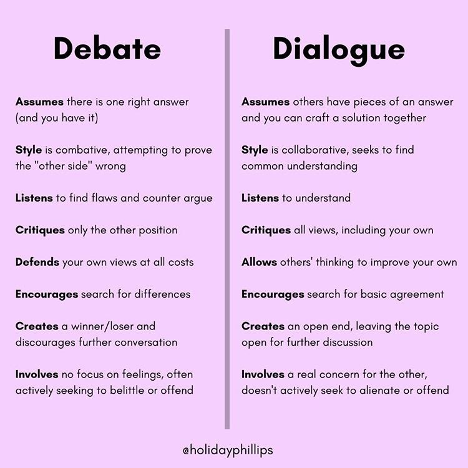By: Samantha Fang ‘23
“Creating purposeful dialogue on race helps us to be better equipped in fighting injustices. Systematic change is necessary in creating the equality that marginalized communities deserve, and educated conversations can be the first steps to making that change.” — Dwight Smith, Net Impact
While conversations about race and privilege can be challenging, they are not only necessary in your daily life, but also in the workplace. These difficult conversations are stepping stones to creating a more inclusive and welcoming work environment and puts pressure on companies to seriously address the internal structures and culture which may be perpetuating racial bias. You can find our blog post on ways to tell if a potential employer values diversity and inclusion here!
Why is it so difficult to discuss race and privilege?

“The reason why these conversations are so difficult is because they are deeply emotional. Deep inside everybody, there’s an internal scale of justice. Everybody has a deep belief of what’s right and wrong. When that’s out of balance, it hurts us deeply.” — Kwame Christian as quoted on CNBC Make it
Conversations about racial injustice often involve bringing up experiences and events that may be very traumatic and painful. Differences in viewpoints and experiences can also add tension. For some, it can be hard to face what they need to unlearn or to confront their own privilege. For others, these conversations can be intimidating. Many fear they will say the wrong thing or aren’t educated enough to speak out or engage in conversation about these topics and as a result, choose not to. However, these conversations are crucial steps to understanding and addressing the injustices faced by our colleagues. They help us figure out how we can work together to create change.
See below for tips on how to make these conversations thoughtful, productive, and respectful. You will also find resources for further reading at the very end!
6 Tips for Engaging In Productive Conversations About Race And Privilege At Work
Do your research and prepare beforehand

“In order for a white person or non-black person of color to be an ally and thoughtfully engage in discussions about race, it’s crucial they do their own work to understand the privilege that shapes their world view, and educate themselves on the things they need to personally learn and unlearn in order to be a better advocate.” — Jennifer Liu, CNBC Make it
Before engaging in these conversations, put in the work to educate yourself first! While education is an ongoing process, it is helpful to go into these conversations with at least some knowledge and understanding. There are so many great resources being shared online through social media and other outlets. If you are feeling overwhelmed, this list from Paradigm is a good starting point.
“It’s easy to feel disconnected from this history when you feel as though it has no direct tie to your reality. It’s interesting that even for me – as an Ethiopian – there was a time when I didn’t truly connect with this history of slavery and racism. I’ve realized that, at the end of the day, a love for humanity means a respect and honor for all pain and a oneness of purpose toward dismantling ignorance and pursuing justice. The moment you are here in the U.S., your reality is connected to a racial construct.”
— Yodit Kifle as quoted on Net Impact
Acknowledge your own preconceptions, biases, and privilege. Recognize the ways in which you have consciously and unconsciously benefited from systems that are hurting others. Learn about how historical events and movements are connected to and still shaping society today.
State your intentions and goals for the conversation

“It’s easy to look outward instead of inward and talk about racial injustice in a broad way and not about challenges the organization has had about hiring, promotion, and culture.” — Sarah Todd, Quartz at Work
Setting a clear goal and intention for conversations about race and privilege at work is key in figuring out the size of the conversation, who should be taking part in them, and what you are trying to accomplish. For example, according to Quartz at Work, “the goal might be … to invite employees to share their personal experiences and anecdotes about how bias manifests at their organization, or to revisit hiring procedures in order to weed out practices that invite or perpetuate bias.” It is important to direct these conversations back to company practices and culture. Possible questions to address include:
- Are there diversity & inclusion programs and diversity hiring initiatives at the company right now?
- Have they been effective?
- Does the company actively work to create an inclusive work environment?
- What needs to change?
Closely and honestly examine together how the company can do better going forward.
Acknowledge the difficulty and weight of these conversations

A good way to begin these difficult conversations is acknowledging the weight of them. This also helps to create a safer and more respectful space for colleagues to share their emotions and thoughts on these topics. As Kwame Christian shares with CNBC Make It, “a good place to start a difficult conversation is to acknowledge its difficulty and validate the other person’s feelings, whether it’s shock, sadness, anger, confusion or shared discomfort.” Even after you begin asking questions and learning about your colleagues’ viewpoints and experiences, continue to be mindful of how you are conversing with them.
Check out the following infographics from Catalyst which offer insight on how to engage respectfully in tough conversations and connect in a meaningful way:
Engage in dialogue not debate

CREDIT: @holidayphillips on Instagram
Approach conversations about race and privilege with compassion, empathy, and an open mind.
“Personal experience can’t possibly give the complete view of such complex issues. The history of racism extends far beyond individuals; it encompasses years and years of both individual and community experience. It is important to recognize and acknowledge the validity and reality of other experiences.” — Dwight Smith, Net Impact
A key aspect of productive dialogue is the acknowledgement and respect for different viewpoints and experiences as well as the willingness to critique our own views and beliefs. The goal is to find common ground and understanding as well as to broaden our own perspectives. You can find a helpful breakdown of the differences between discussion, debate, and dialogue here!
Another important aspect of having an open and productive dialogue about racial injustice is confronting your privilege. As described in this post from the University of Michigan, “Privilege, simply put, is societally granted, unearned advantages accorded to some people and not others.” Hence, privilege is directly connected to and impacts many aspects of our lives, such as the accessibility of education and professional opportunities. Acknowledging one’s privilege can come with feelings of discomfort, guilt, and even shame. It can also cause people to get defensive. These are some of the main reasons why conversations about privilege can be so difficult.

It is important to remember that privilege and oppression are not mutually exclusive and that conversations about privilege are not meant to be attacks on your character nor are they meant to belittle or invalidate your experiences. Instead, these conversations are opportunities for you to confront your privilege, recognize how it has given you advantages and/or access to opportunities throughout your life that you had not thought about before, and learn about the ways in which you can use this privilege to help others and make a difference.
“This acknowledgement of privilege should invoke a willingness to listen, to be educated, and to understand how you can use this privilege for the betterment of others.” — Dwight Smith, Net Impact
Be willing to admit you do not have all the answers

“It is not enough to recognize and remain complacent in this state of unknowing; allow this to be a catalyst for an active effort to become informed. … It is important to seek out answers to questions that you don’t know, and be willing to be educated on topics that you are uninformed about.” — Dwight Smith, Net Impact
The fear of being wrong or not knowing enough can prevent us from taking part in conversations about race and privilege, but it shouldn’t. You should absolutely do your part in educating yourself before and after these conversations, but the point is that you should come into conversations like these willing to embrace the discomfort of not knowing and of being wrong. True growth lies outside your comfort zone. Be open to learning something new and to understanding a concept, experience, or event from another perspective. Actively listen and ask questions.
“Do the best you can until you know better. Then when you know better, do better.” — Maya Angelou
Reflect and commit to change

“It is not enough to merely hear or read about race; it is important to make an effort to apply these changes to your mindset and actions.” — Dwight Smith, Net Impact
After the conversation, be sure to take some time to reflect.
Sample Questions To Think About:
- What are you taking away from this conversation?
- How do your thoughts and experiences compare with your colleagues’ thoughts and experiences?
- What race-based biases have you discovered you unconsciously hold that you’d like to work on deconstructing?
- How can you do better going forward? What are your next steps?
Change doesn’t come easily, and active work must be done in order to make a lasting positive impact. Keep yourself accountable, and continue learning about how you can contribute and make a difference at work and in your everyday life.
“The best things in life are on the other side of a difficult conversation. If we can have the conversation in a better way, we can make meaningful change in the world around us.” — Kwame Christian as quoted on CNBC Make it
Don’t know where to start? This Race and Privilege Conversation Pack from We’re Not Really Strangers can act as a great starting point for approaching conversations about race and privilege at work and in your daily life. Feel free to share this blog post as a way to spark conversations as well!

Additional Resources To Check Out:
—
Interested in writing a blog for the Career Development blog? It’s open to Macaulay students and alums. If you would like to contribute or have any questions, feel free to email Jamie.Ruden@mhc.cuny.edu.



































































